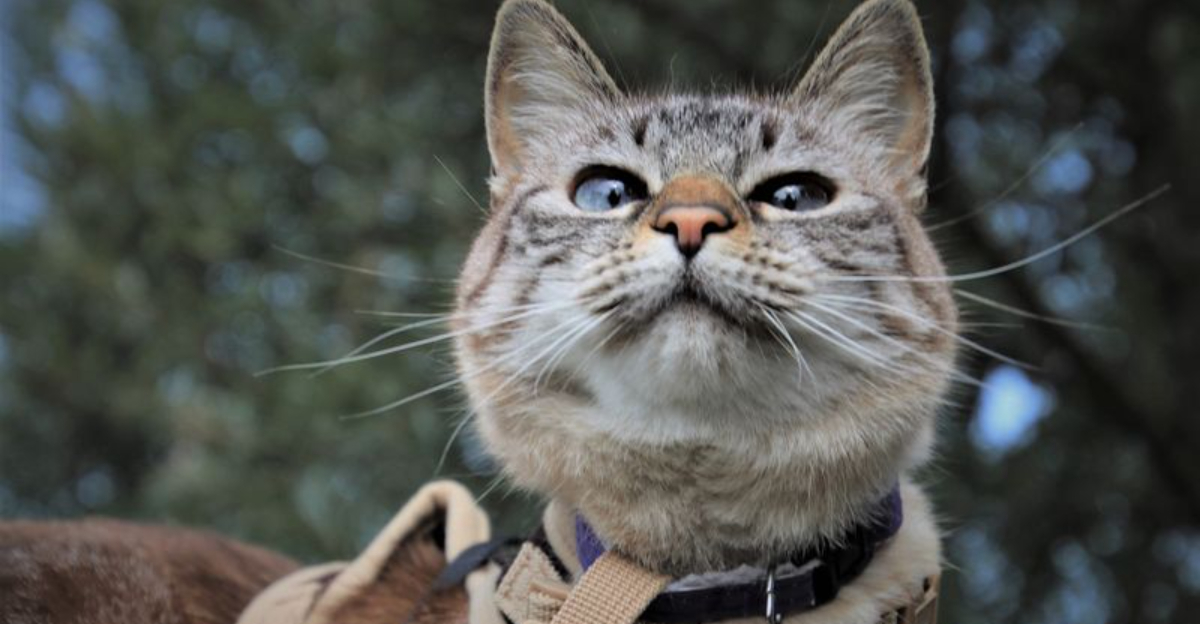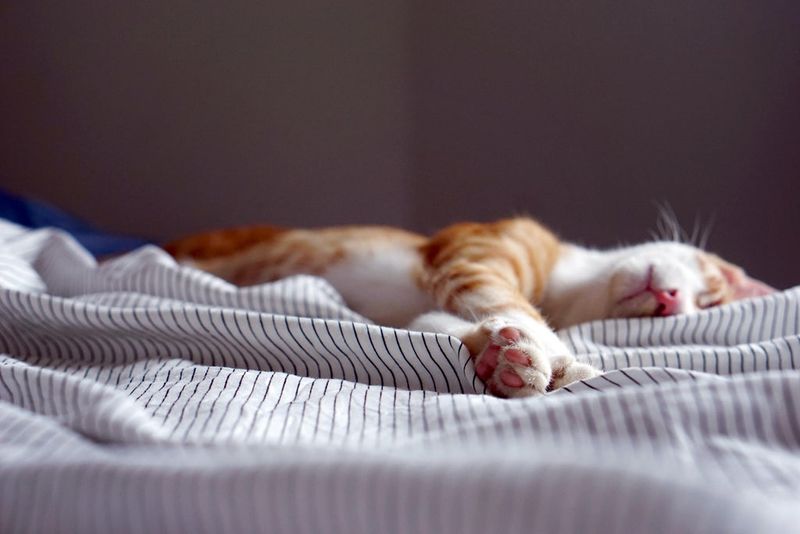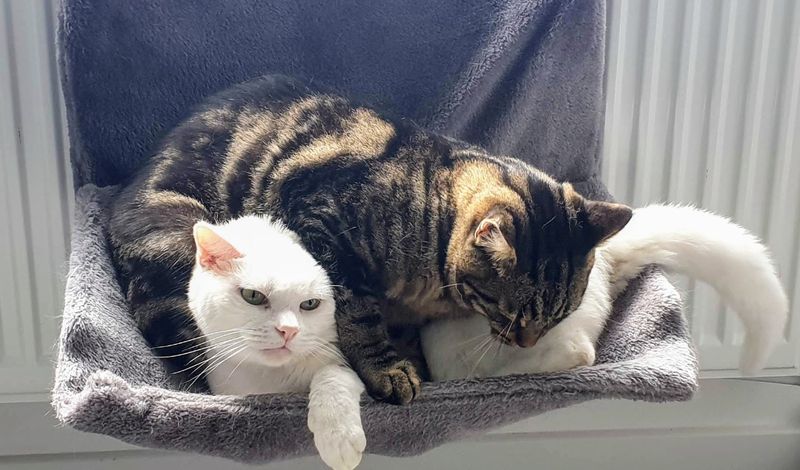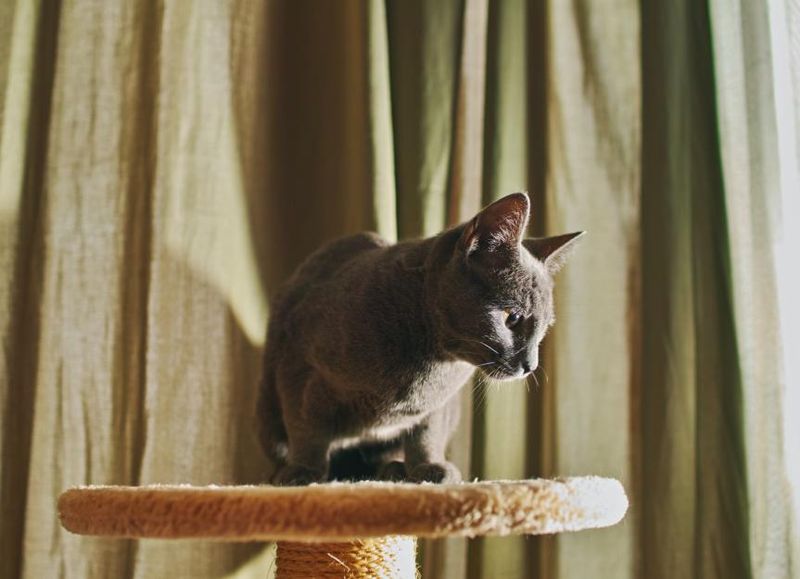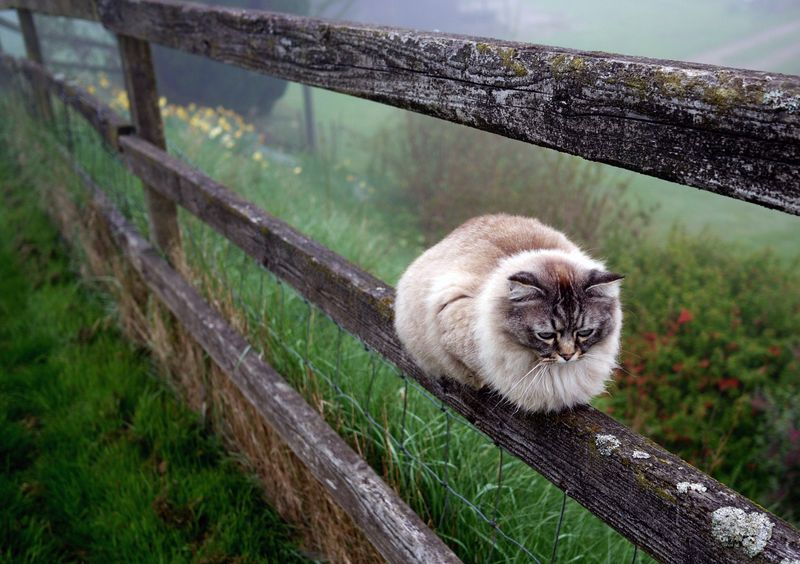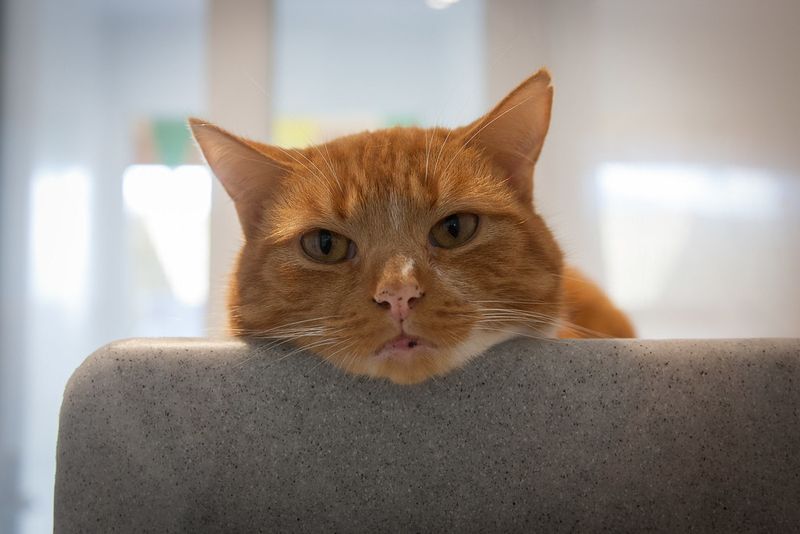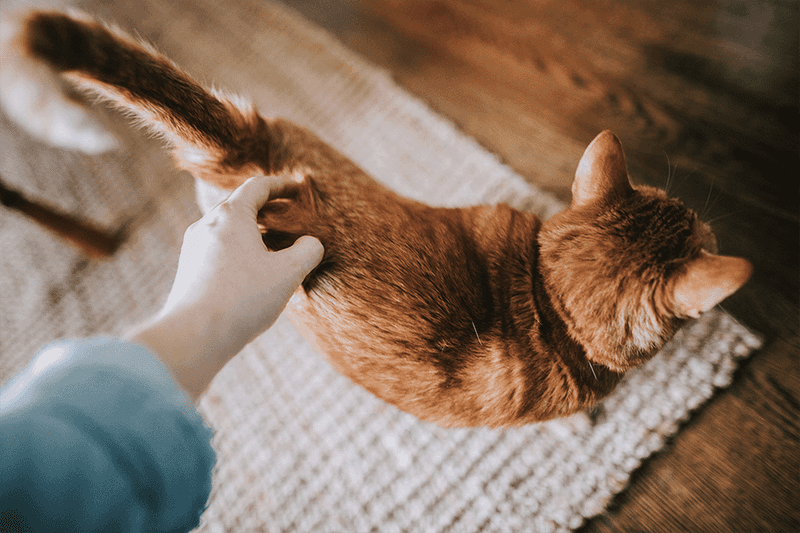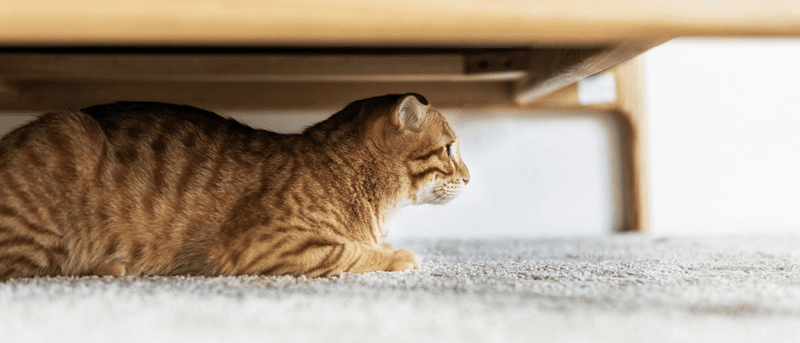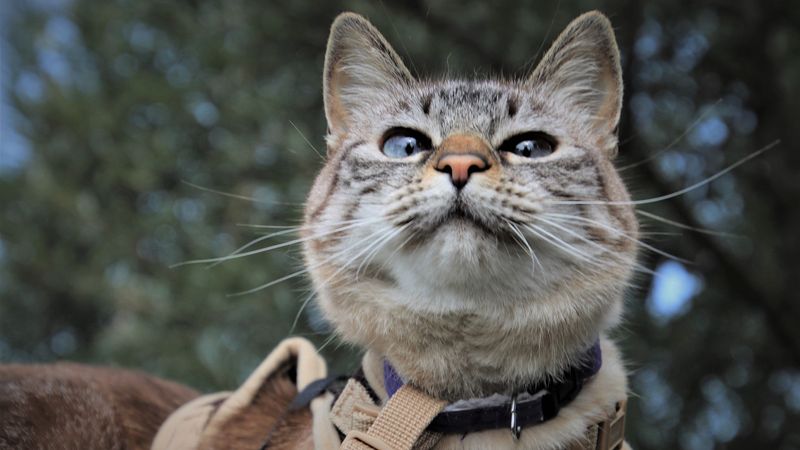📖 Table of Content:
- 1. Mastering the Art of Napping
- 2. Using Silence to Get What You Want
- 3. Graceful Self-Cleaning Habits
- 4. Navigating Tight Spaces Like a Pro
- 5. Being Selectively Affectionate
- 6. Avoiding Unnecessary Drama
- 7. Independence Is a Good Thing
- 8. Owning the High Ground
- 9. The Art of the Slow Approach
- 10. Using Body Language to Communicate
- 11. Personal Space Matters
- 12. Confidence Without Noise
When people think of cats and dogs, they usually picture opposites. One is aloof, independent, and calculated; the other is loyal, excitable, and eager to please. While they’re often portrayed as natural rivals, there’s a lot more shared ground between them than most pet owners realize—and even more untapped potential for learning.
Surprisingly, cats have a few tricks up their furry sleeves that could actually improve a dog’s behavior, instincts, and lifestyle. From their refined sense of personal space to their graceful approach to problem-solving, cats move through the world with a quiet confidence that many dogs lack. And while dogs may lead in enthusiasm, playfulness, and raw affection, a bit of feline finesse could help them strike a better balance.
So, what exactly can man’s best friend learn from their whiskered housemates? More than you’d think. Here are 12 cat-inspired habits that could transform your dog’s behavior in surprisingly smart (and sometimes hilarious) ways.
1. Mastering the Art of Napping
While dogs often opt for quick, scattered snoozes, cats have perfected the science of restorative rest. Napping isn’t just about sleep for cats—it’s a strategic energy-saving move. Unlike dogs, who may stay alert or restless throughout the day, cats conserve energy in elegant stillness. This kind of downtime could help dogs better regulate stress and anxiety. Imagine a dog that doesn’t feel the need to follow every sound or movement. By observing their feline roommates, dogs might learn the benefits of choosing rest over constant action. Sometimes, doing absolutely nothing is the smartest move of all.
2. Using Silence to Get What You Want
Instead of barking or whining, cats often sit quietly and use their eyes to communicate. It’s a calm, mysterious form of persuasion that somehow gets results. Dogs tend to vocalize their needs loudly, which can sometimes irritate or overwhelm their humans. Learning the power of silence could lead to more effective communication. Watch a cat silently gaze at a door until it magically opens—that’s strategy. If dogs could channel even a fraction of that quiet resolve, they might get more of what they want with less chaos. Subtlety, it turns out, can be incredibly effective.
3. Graceful Self-Cleaning Habits
Cats spend hours grooming themselves, always striving to look and feel their best. Most dogs, on the other hand, rely heavily on their humans to keep them clean. Though licking doesn’t replace a proper bath, self-care promotes comfort and hygiene. By mimicking a bit of cat grooming—like licking paws or wiping faces—dogs could reduce dirt buildup between cleanings. This instinct might even cut down on itchy skin or debris in the fur. Grooming can also be calming, a soothing ritual after playtime. A dog that learns from a cat might end up a little cleaner—and a lot more confident.
4. Navigating Tight Spaces Like a Pro
Agility is second nature to cats, who slip through tight spaces and leap gracefully onto high surfaces. In contrast, many dogs barrel forward with little thought for coordination. Adopting some feline finesse could improve a dog’s spatial awareness. That means fewer knocked-over lamps, stubbed toes, or tangled leash situations. Cats assess space before acting; they’re calculated in every move. If dogs slowed down just a beat to think before leaping, they might avoid clumsy mishaps. Coordination isn’t just for the graceful—it’s also a skill that can be learned.
5. Being Selectively Affectionate
Cats don’t offer their affection freely—they make you earn it. That controlled emotional generosity creates a sense of value and intrigue. Dogs, by contrast, often overwhelm with constant cuddles and attention. While that’s endearing, a bit of restraint can make interactions more meaningful. When dogs learn to read the room, their affection becomes more welcome and well-timed. This doesn’t mean they should become aloof—it simply adds nuance to their social skills. Sometimes, a well-placed nuzzle is more powerful than nonstop enthusiasm.
6. Avoiding Unnecessary Drama
Conflict isn’t appealing to most cats—they prefer a graceful exit over a barking match. When tension rises, they walk away instead of escalating. Dogs, though, can get reactive and vocal when agitated. By following the cat’s lead, dogs could learn to de-escalate and preserve peace. A calm retreat isn’t cowardice—it’s wisdom in action. Think of all the reduced barking, growling, and anxiety if dogs chose peace like cats do. In a shared home, calm energy is contagious.
7. Independence Is a Good Thing
Self-sufficiency defines cats; they’re content to entertain themselves without constant input. Dogs often crave attention, which can lead to behavioral issues when left alone. Borrowing a little cat-like independence could ease separation anxiety. Not every moment needs to involve stimulation or play. Dogs who learn to enjoy solo time may develop more confidence and calm. Watching a cat lounge alone for hours might show dogs that being alone isn’t scary—it’s empowering. Independence, after all, is a skill that benefits both pets and their people.
8. Owning the High Ground
Cats instinctively climb to survey their surroundings from above. Dogs rarely seek height, but they could gain confidence and control from elevated vantage points. A safe perch or raised dog bed can offer a calming sense of ownership. Height can also reduce anxiety, giving dogs the feeling of safety that cats crave. Observing how cats use vertical space might inspire more strategic rest areas for dogs. This isn’t just about climbing—it’s about perspective. Sometimes, a new point of view changes everything.
9. The Art of the Slow Approach
Careful observation defines a cat’s strategy—they don’t rush into unfamiliar territory. Dogs often lead with enthusiasm, diving into situations before assessing them. Slowing down, like a cat does, could improve a dog’s judgment and safety. Especially in new environments or around strangers, patience pays off. Learning to pause, observe, then act can reduce accidents and stress. It’s a simple shift in behavior with big rewards. Not every moment needs to be a mad dash forward.
10. Using Body Language to Communicate
Subtlety is a cat’s secret weapon; they convey complex messages with a single tail flick or blink. Though dogs already rely heavily on body language, they can still learn from feline finesse. The slow blink of a relaxed cat can signal peace and trust. Dogs who master more nuanced communication could strengthen their bonds with both humans and other animals. Clear, calm signals prevent misunderstandings and reduce conflict. Paying attention to how cats “speak” without sound is a masterclass in connection. Communication isn’t always about volume—it’s about clarity.
11. Personal Space Matters
Cats are firm believers in setting boundaries, and they expect those limits to be respected. Many dogs, especially the cuddly types, can be overly forward with people and pets. Taking cues from a cat’s respect for personal space could help dogs form better social habits. Recognizing when to back off or give someone room isn’t just polite—it’s crucial for coexistence. With subtle body language, cats signal when enough is enough. If dogs tuned into these cues more often, interactions would be smoother and less stressful. Sometimes, the kindest thing a dog can do is step back.
12. Confidence Without Noise
Cats move through the world with a quiet self-assurance that commands respect. They don’t need to bark, growl, or show off to prove their presence. Dogs could benefit from understanding that confidence doesn’t have to be loud. Calm behavior often communicates strength more effectively than vocal outbursts. A dog who walks into a room with composed energy can still make a strong impression. Watching how cats claim space without fanfare is a lesson in poise. True confidence, after all, is measured in actions—not noise.
